Perspective
Matt Bueby
With everything going on in the world, I’m reminded of just how fragile we are. Particularly as it comes to travel- the ease at which we take for granted the places we visit, and how unforseen events such as a pandemic, or war, impact our ability to enjoy the things we love most.
We had planned to visit Russia on our honeymoon afterall, and on our short list, a return visit to eastern Eueope, with further explorations to Romania, Moldova, and Ukraine. While the pandemic put a premature end to those plans, we figured we would make those visits once things were safe, but with the current situation, its hard to fathom a visit anywhere near the aforementioned countries anytime soon.
It again brings me back to perspective- the places we visit that are safe one day, and dangerous the next. Or conversely, places with such an ugly past, that its impossible to comprehend visiting in the comforts of safe surroundings in the present day.
Oftentimes, our travels take us to powerfully moving places, carefully sought out for their beauty and joy, or even spontaneously stumbled upon in good fortune. These experiences are magical, often life changing, and a big reason for why we enjoy the sensation of wanderlust.
On the other hand, we sometimes find ourselves in areas with much darker sides- perhaps where great tragedies took place, or where war and violence ensued, where the lasting legacy is one of sorrow- anything but beauty and joy. It’s not that we explicitly seek these places out, though sometimes we do. Rather, they are scattered all over the globe, and be it by happenstance, or simply because they are so ingrained in the fabric of our world, they are at times unescapable.
But one thing is for sure, they are no less powerfully moving. In fact, these places tend to be of the utmost significance, because it best draws out the very essence of the travel experience; emotion. Moreover, we hold the memories from these experiences with us most closely because of the perspective that they bring.
Perspective is a powerful thing. It can bring forth truth from doubt, provide clarity, and most importantly, it can humble you.
Normandy American Cemetery and Memorial
I had the chance to visit Normandy the first time I travelled to Europe in May of 2005. Of anywhere I was to visit that spring (9 countries in all) this was high on the list. I’d long been fascinated with history and spent a great deal of time in preparation for this day.
My initial and lasting impression of the region was vastly different than the one I had prepared for. Instead of the gore and drab pictured in my brain, I found that it was all wonderfully beautiful. The towns, the countryside, and just minutes spent strolling along Omaha Beach on a warm spring afternoon and you’ll think you’re anywhere but the scene of such bloodshed, no matter how long ago it took place.
In fact, many fellow beach walkers seemed to be similarly struck by the beauty of the place. If you didn’t know what happened there, you’d never believe it. But head back up the hill to higher ground, peer back over the cliff looking back on the countless rows of white crosses representing the thousands of American lives lost during the D-Day invasion, and you're quickly reminded of what this place was.
It's impossible not to be moved. But if there wasn't a nearby cemetery, with such a stark memorial to the carnage, what would differentiate Omaha Beach from any other? Without visual reminders, what sets apart the thousands of other battlefields that dot the globe, flying under the radar and returning to their former beauty in the decades that followed their respective hosted tragedies?
It’s something that stuck with me that day that I keep with me always- how something so beautiful could turn so ugly, and someday be beautiful again. It brings forth a sense of hope and angst all at once. Which beach that we love to walk along will one day become a war zone? Where do we enjoy the luxury of carefree travel that one day will be out of the question? We aren’t too far removed from September 11, where the innocence of safety and security within our borders was forever shattered.
Conversely, where will we be able to go someday that today seems inconceivable? Maybe it's North Korea, or Syria. Or somewhere else where travel seems far fetched, or even dangerous. It’s a reminder that on each journey we take, we must realize its significance, never take anything for granted, remember that nothing is quite like it seems, and that certainly, nothing lasts forever.
If beauty is an easy way to mask tragedy, ignorance can complicate it further.
Take the case of two of my favorite cities, found continents apart, forever stained with the impact of violence. These are two cities that I am better for having visited, and where I gained points of view that I was not provided or able to understand in my childhood years.
The first, Panama City, Panama. Sure, I’d heard of Noriega, knew that Americans went in to bomb the place, but knew little of why or what happened after. Like any school aged American in the 90s, all we knew was that the USA was the greatest country in the world, undefeated in war, self justified in most overseas meddling, etc.
The invasion was swift and with conquest. In America, we claimed victory. But outside our borders, a different story was told. The UN denounced the invasion, scholars claimed our actions illegal. In Panama City, hundreds of civilians were killed, with many thousands more having been displaced.
Out of the chaos, Panama picked up the pieces, becoming a Central American stronghold. Their Human Development Index is now the highest in Latin America, and their economic growth, the fastest. The skyline of Panama City is as impressive as any major world city, a testimony to Panamanian resilience. But 30 years later, many scars remain.
In the hardest hit El Chorrillo neighborhood, there are areas that still look much like they did in the days after the invasion, where crumbling buildings and rubble adorn the streets. The rebuild is slow here, and many markets, restaurants and other businesses have simply popped up in the middle of these very same bombed out shells of buildings that were never torn down. It’s here where some locals remain skeptical of Americans and exhibit a general fear of the outside world. “Why did you do this to us? We will never know,” one restauranteur asked me point blank when I asked her about how it felt operating out of such a setting. “We are forever scarred.”
Still, they move forward.
The second of these towns, Belfast, Northern Ireland, also still battles the ghosts of violence to this day. As with Panama, Belfast provides a unique opportunity to hear a local perspective, which is far different than any I grew up knowing.
When we think of walls we think of Berlin, or these days, perhaps the southern border of the United States. But it's through the heart of Belfast where walls are far taller, have lasted for decades longer, and have seen as much or more violence.
“Peace Walls,” as they are often referred to, are a series of barriers that divide the predominantly Irish Catholic nationalist neighborhoods from Unionist Protestant ones- opposing forces who have waged violence against each other for a half century or more.
Permanently erected in 1969, these walls have lasted the duration of "the Troubles,” a nearly thirty year period of tension and civil unrest between the opposing ideologies resulting in nearly 50,000 injured and hundreds of civilian deaths.
The walls are hard to miss, but if you travel here, you must experience them. Unfortunately, it is because of these walls, and lingering trauma from “the Troubles” that sees Belfast overlooked, often skipped for the more famous and cheery town to the south, Dublin. As great as Dublin is, this is a real tragedy of missed opportunity, as Belfast is a fantastic town that represents both the best of both Irish and British city experience and has seen much strides in the last two decades since the height of violence there in the eighties and nineties.
My favorite experience I had on all of the island of Ireland, was in taking a tour of the peace walls and surrounding neighborhoods.
Simultaneously led by two tour guides- one a Catholic and the other a Protestant- they drove me through the areas hit most by violence, each giving their respective opinions. These two men grew up just blocks from each other, but were worlds apart. They had fought on their respective sides, each experiencing loss of family, and one, loss of limb.
To say they are friends nowadays is a stretch, but it was their stated mutual respect of one other that was their main goal, and my main takeaway. In a united front, they were able to remind us all that tragedy is tragedy, there are often two sides to any story, and that by telling their story, it is their hope that these tragedies never happen again.
I learned so much from both of them, and I left with a changed mind from the American news perspective I had been fed growing up learning about it. Most importantly, I once again learned the fragility of cultural differences, and how things appear now, are oftentimes only a generation or less removed from being vastly more dark and grave in all senses of the world.
Another one of our favorite spots to visit has been the Adriatic coast, with the Croatian town of Dubrovnik being one of the finest cities we will likely ever visit. But much like the aforementioned Belfast, Dubrovnik has a very recent violent past.
Following Croatia’s declaration of independence from Yugoslavia in 1991, a major war ensued, eventually causing the collapse of Yugoslavia, and saw further lingering violence amongst newly created former Yugoslav states Serbia, Montenegro, Bosnia and Herzegovina, and Kosovo.
Dubrovnik was center stage, with the city being seized by Yugoslav forces. As a world heritage site, it garnered much attention, tragic in its bombing. However, because of this same cultural importance, it has been mostly rebuilt. Only a few short miles from the city center however, is the Bosnian border, where things look the same the day the violence died down near the end of the nineties.
It’s not uncommon to find shell casings, bullets, and miles and miles of fenced off areas, full of the worlds largest concentration of unexploded land mines. The warning signs are chilling, the visible debris yet another reminder of what took place in the none too distant past. The people are friendly, but you can’t help but hurt to look over the forever changed landscape.
There is one trip however, most profoundly impacting of any travels we have taken, and may ever take for that matter. Just over a year ago, Kayla and I travelled to Poland, and spent two days in Oświęcim, visiting Auschwitz-Birkenau.
Spending any amount of time in this place which will change the way you view humanity for the rest of your life. I suspect the following imagery to be uncomfortable to anyone viewing it, but it’s ten fold as gut wrenching in the flesh as it appears in textbooks or on a screen. As difficult as it was to capture, it was also done so with the utmost sense of purpose.
It would be easy to look away, but the Holocaust is as real as gets. We must not forget the crimes, brutality, and inhumanity that happened here. And thats the point that gets reenforced repeadetdly, both subconciously in your mind and even overtly by museum staff and guides- take pictures, take them often, and take them home. Remind the world of what happened here. Any guilt of insensitivity is soon washed away, ovecome with the dutiful obligation to tastefully capture and spread awareness and truth.
This was without question one of the more challenging days of our lives, yet also one of our most important. Challenging for certain because of the sheer amount of atrocities committed there, but more so, in trying to process how they were ever allowed to happen. As we walked together through the miles of endless solemn ground, we tapped into the many lessons of past travel experiences, and vowed that we would do our part, however small, to ensure this never happens again.
*Warning- Sensative imagery ahead*




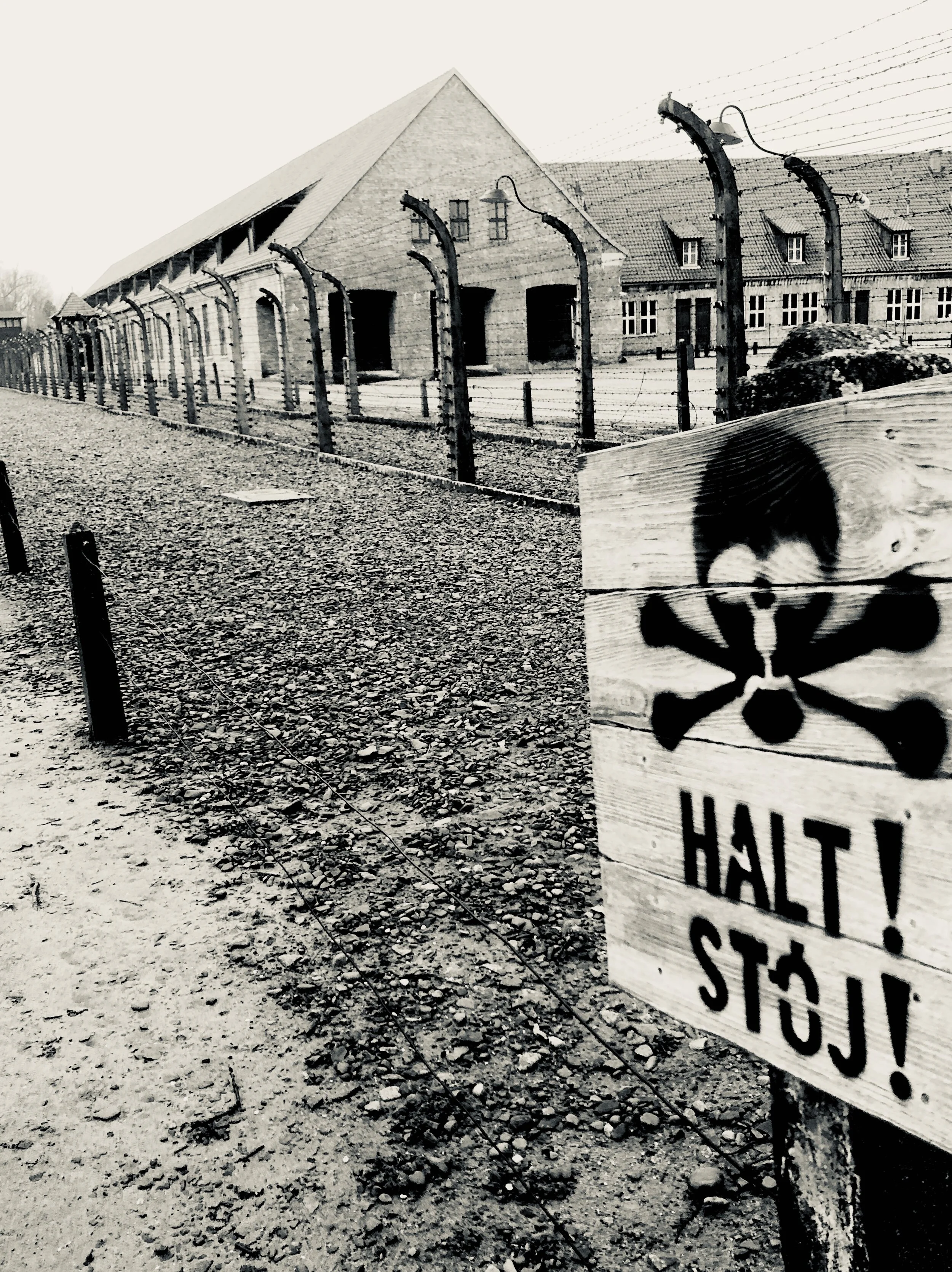
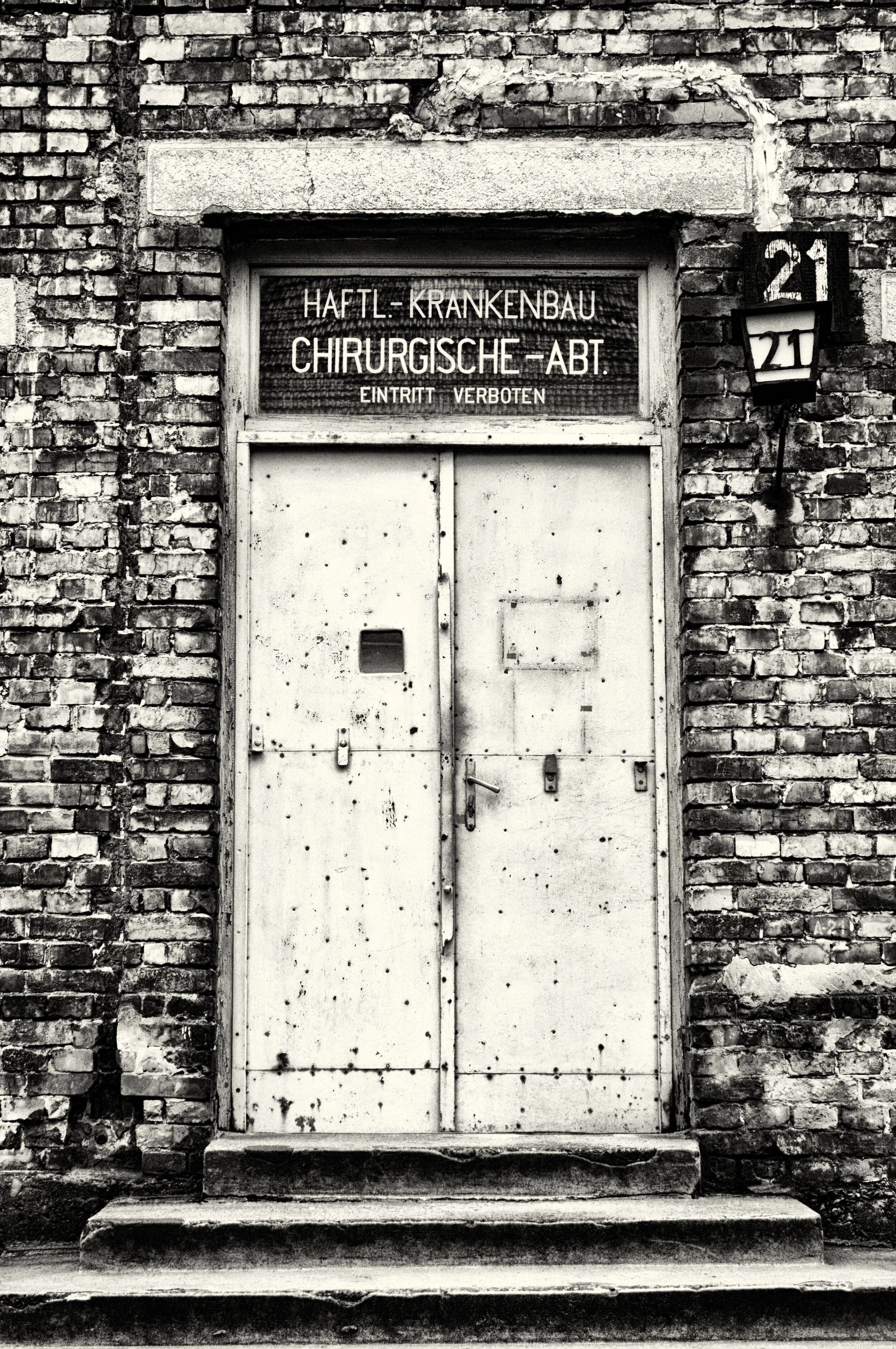

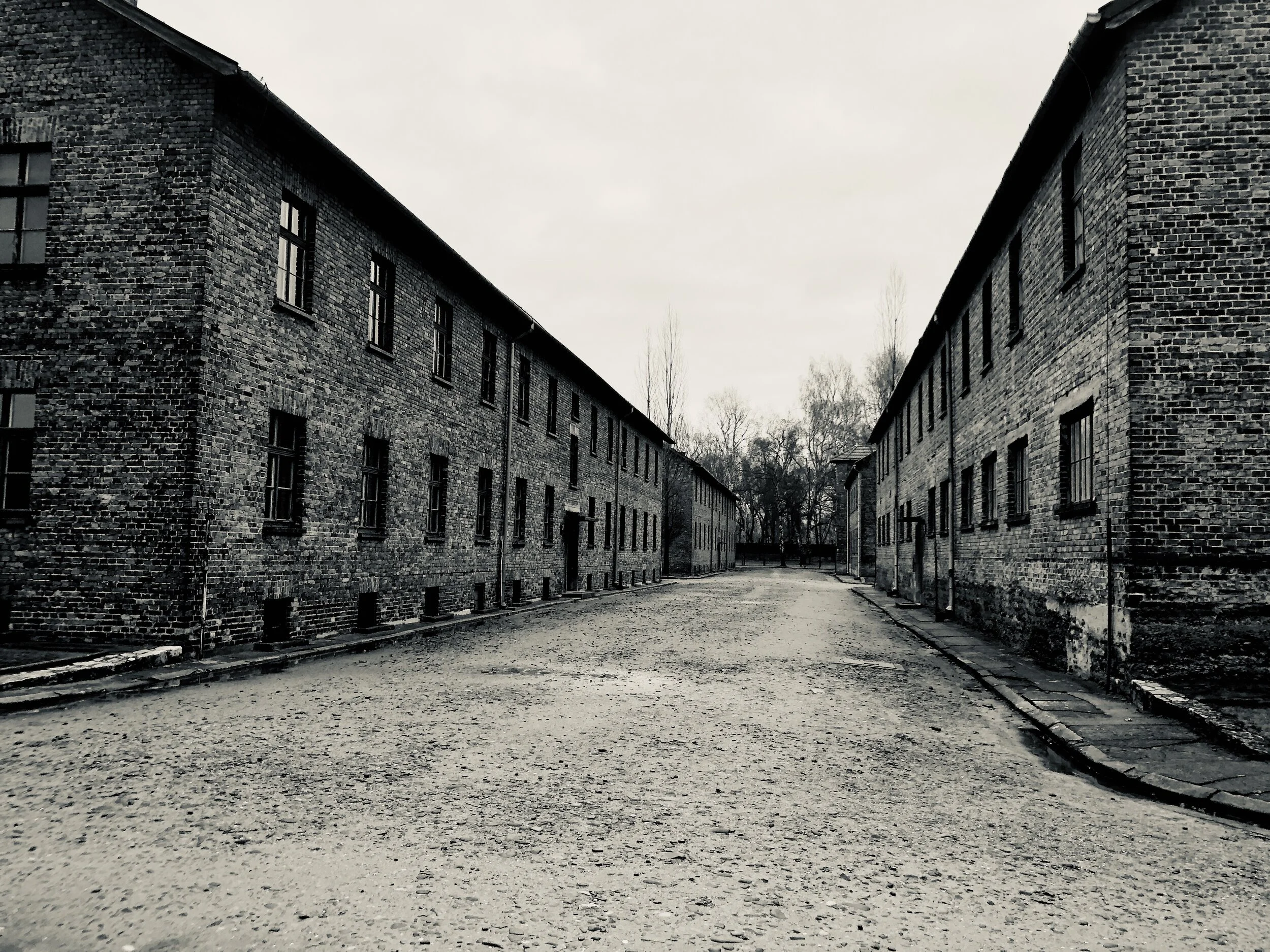
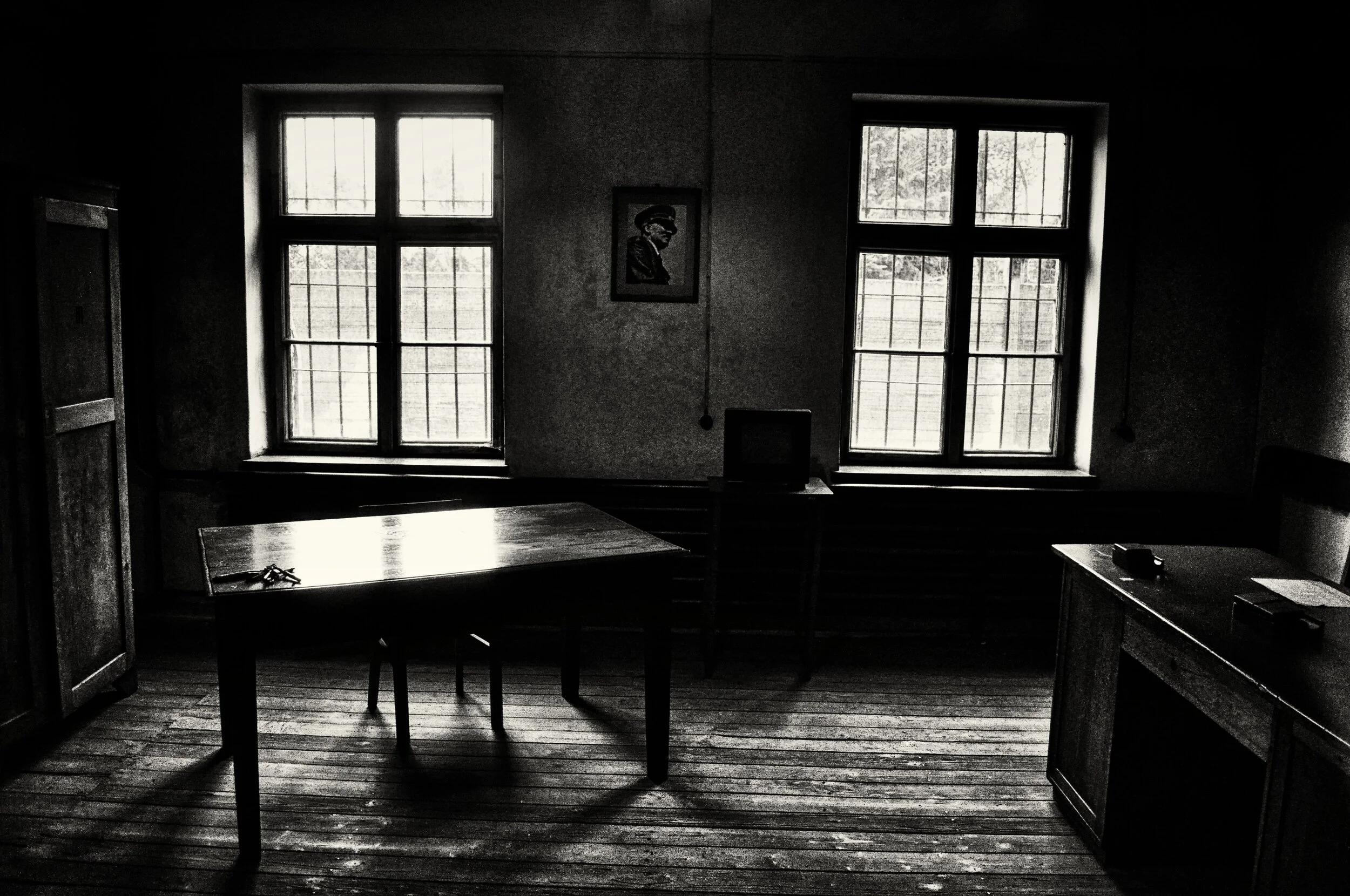
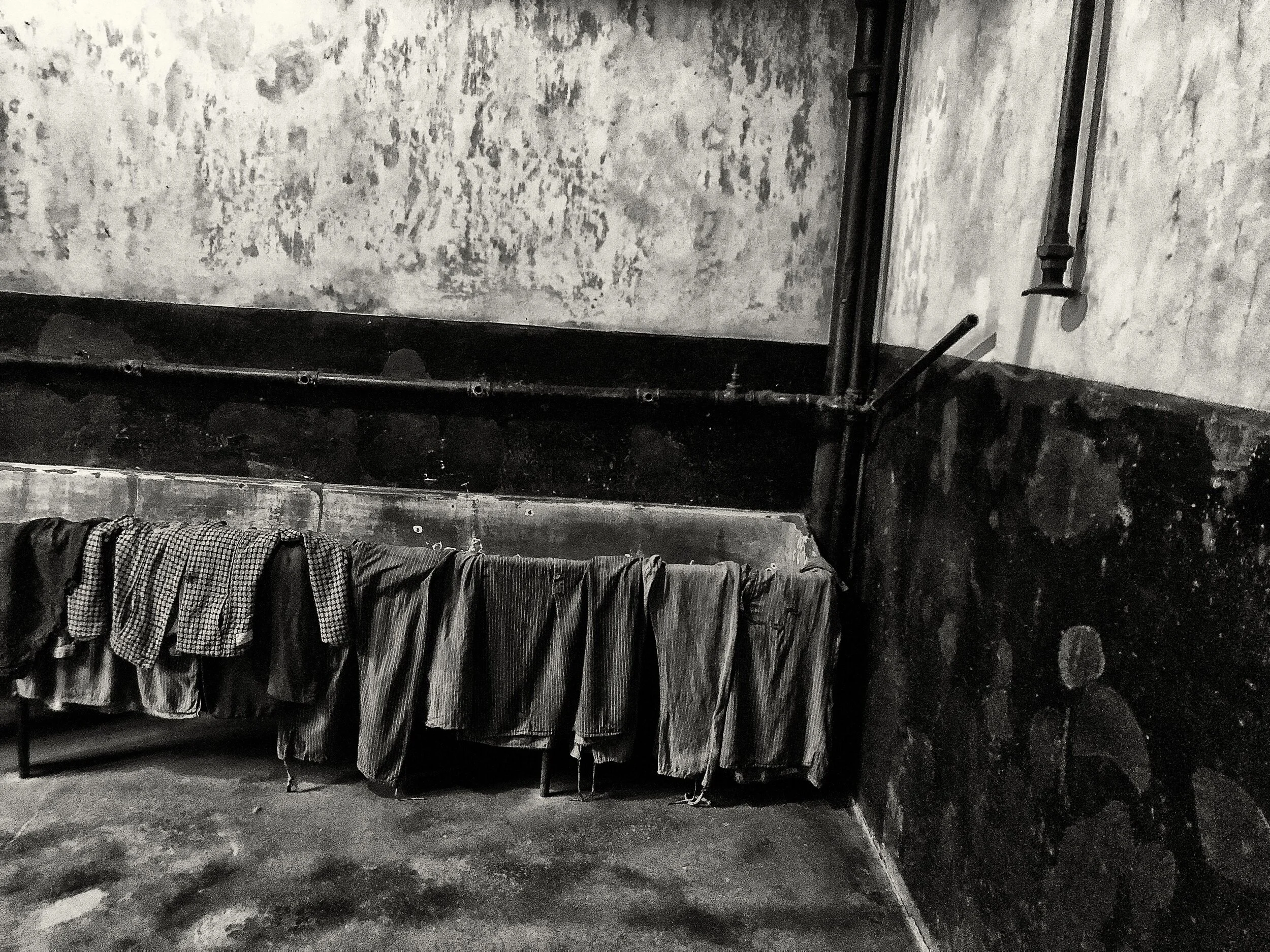
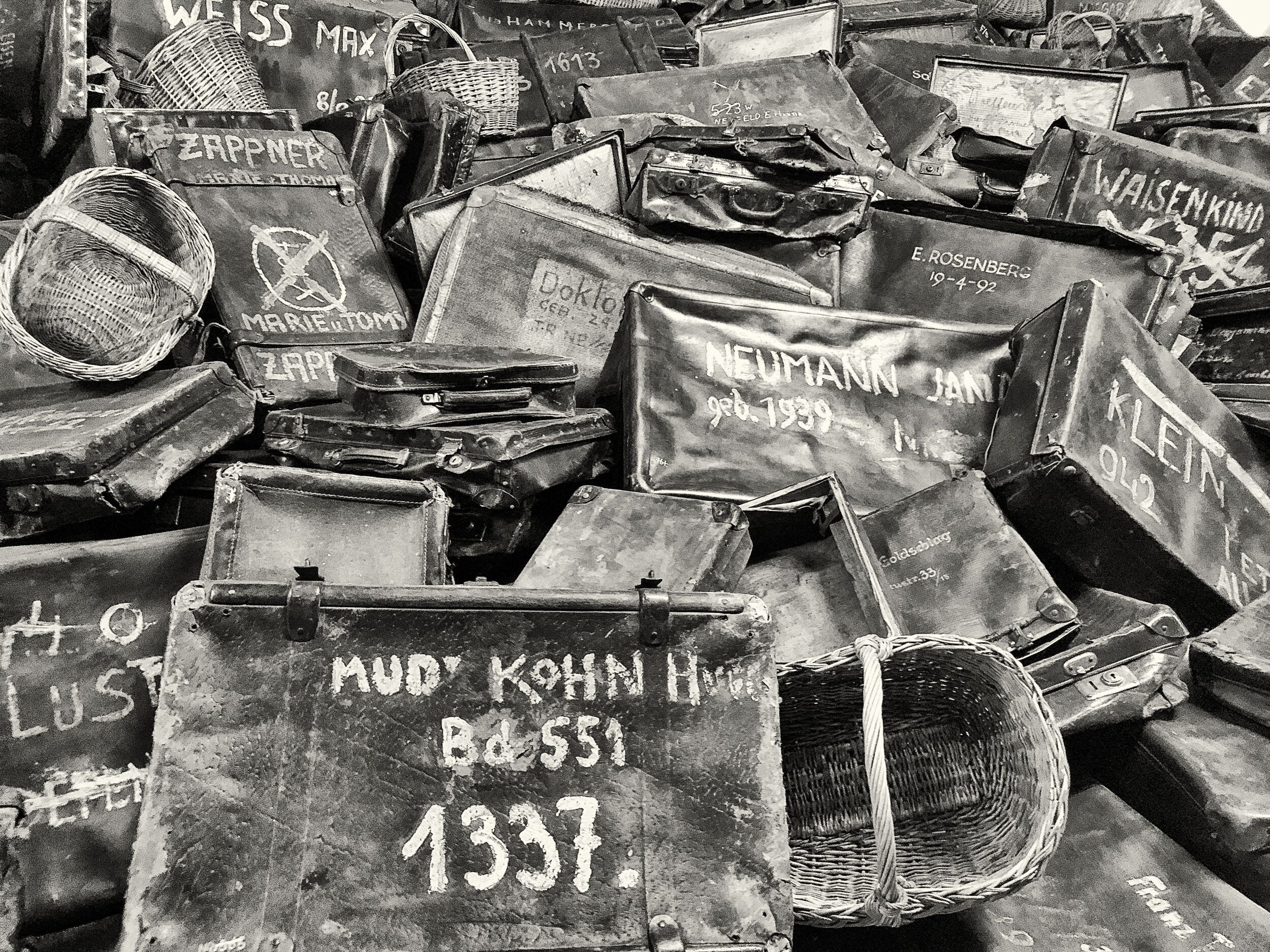
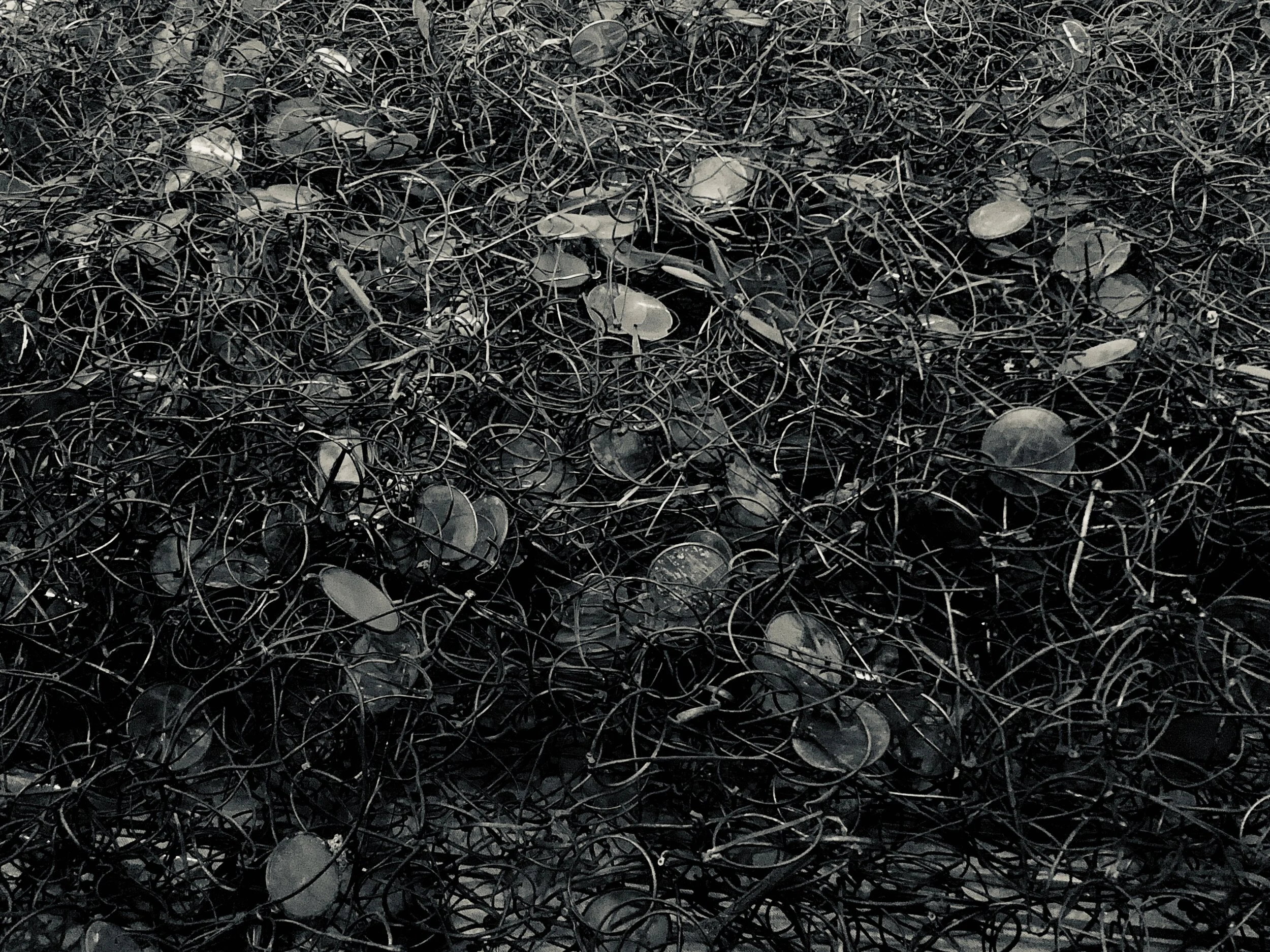
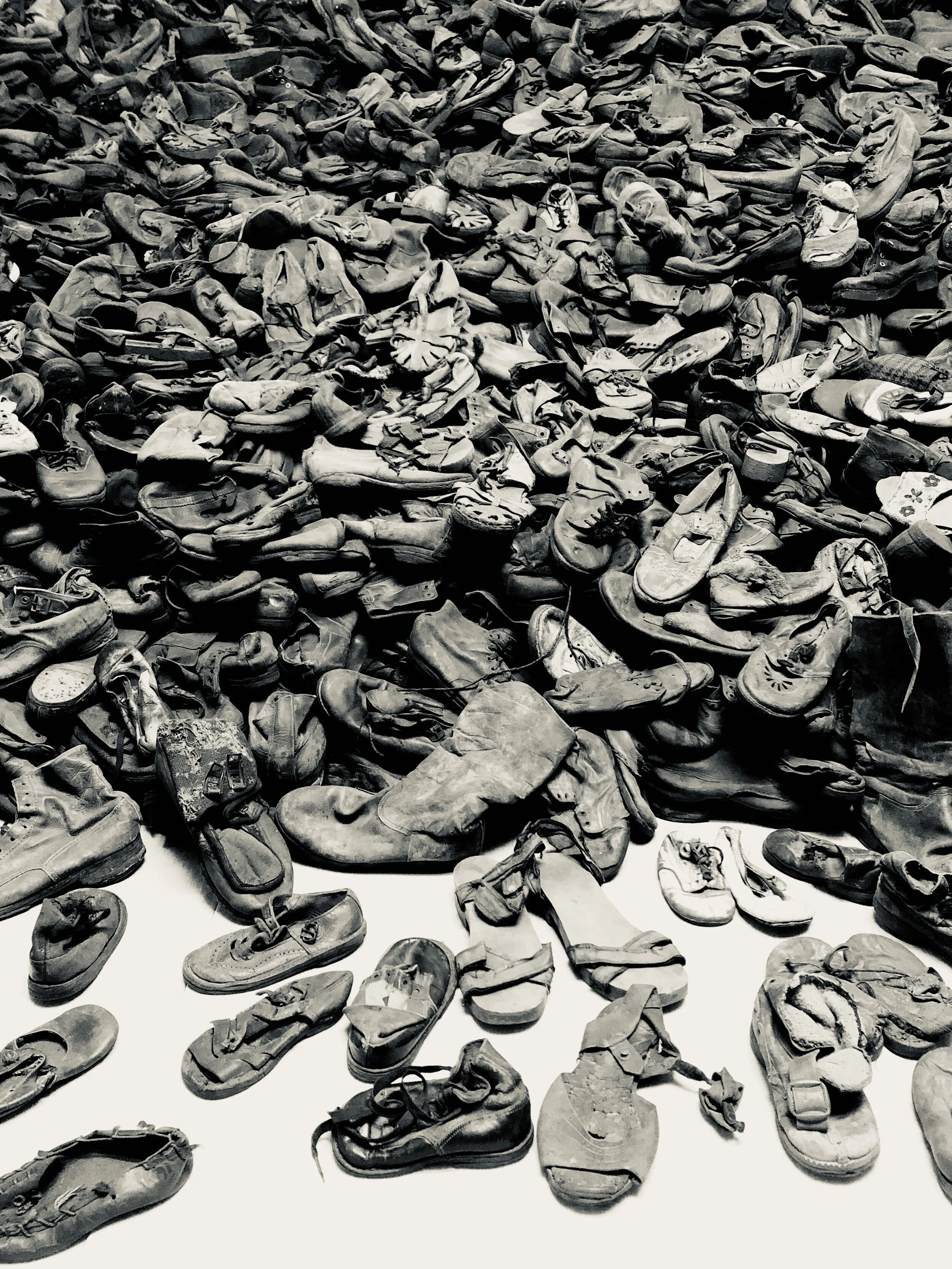


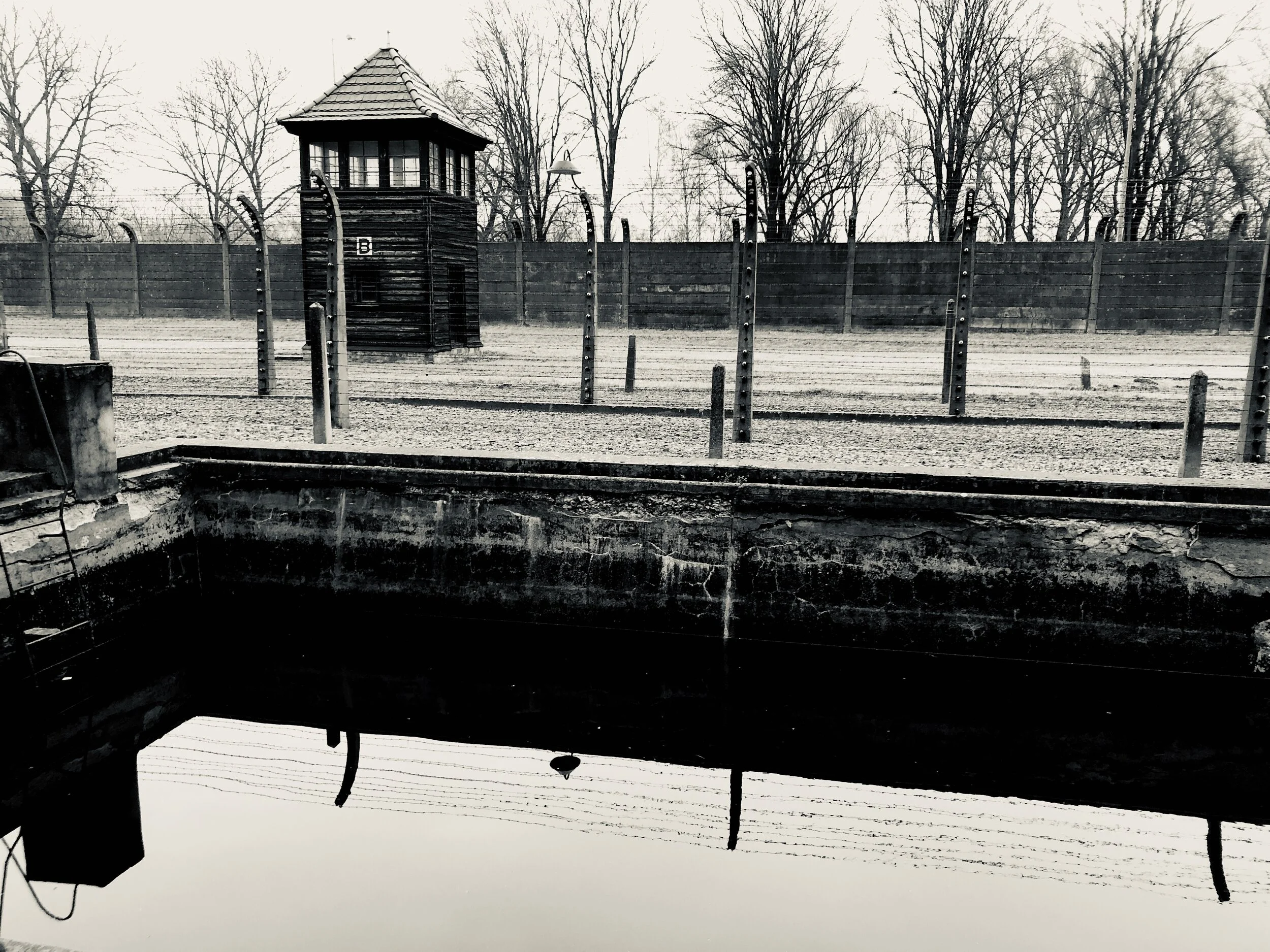

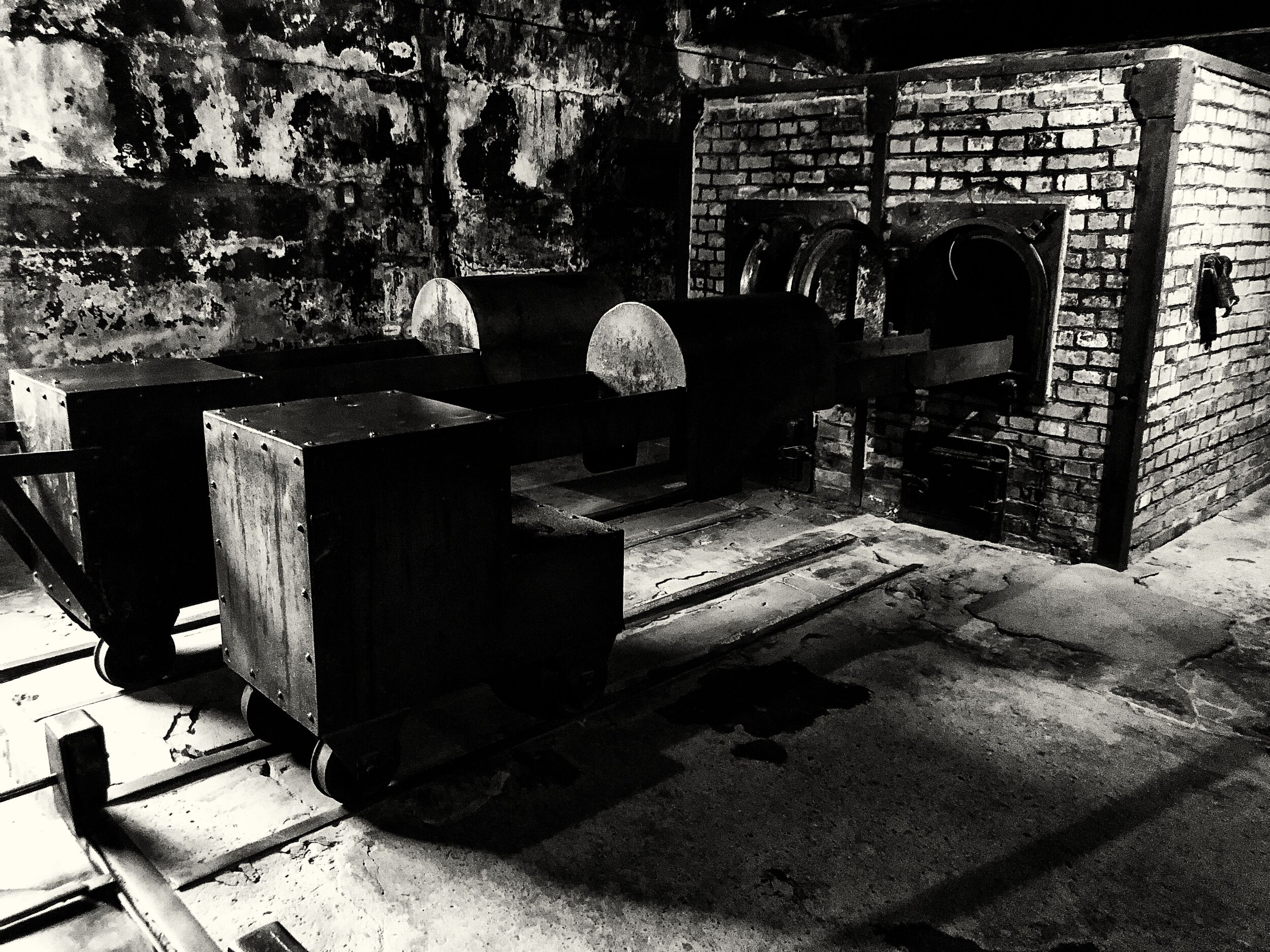

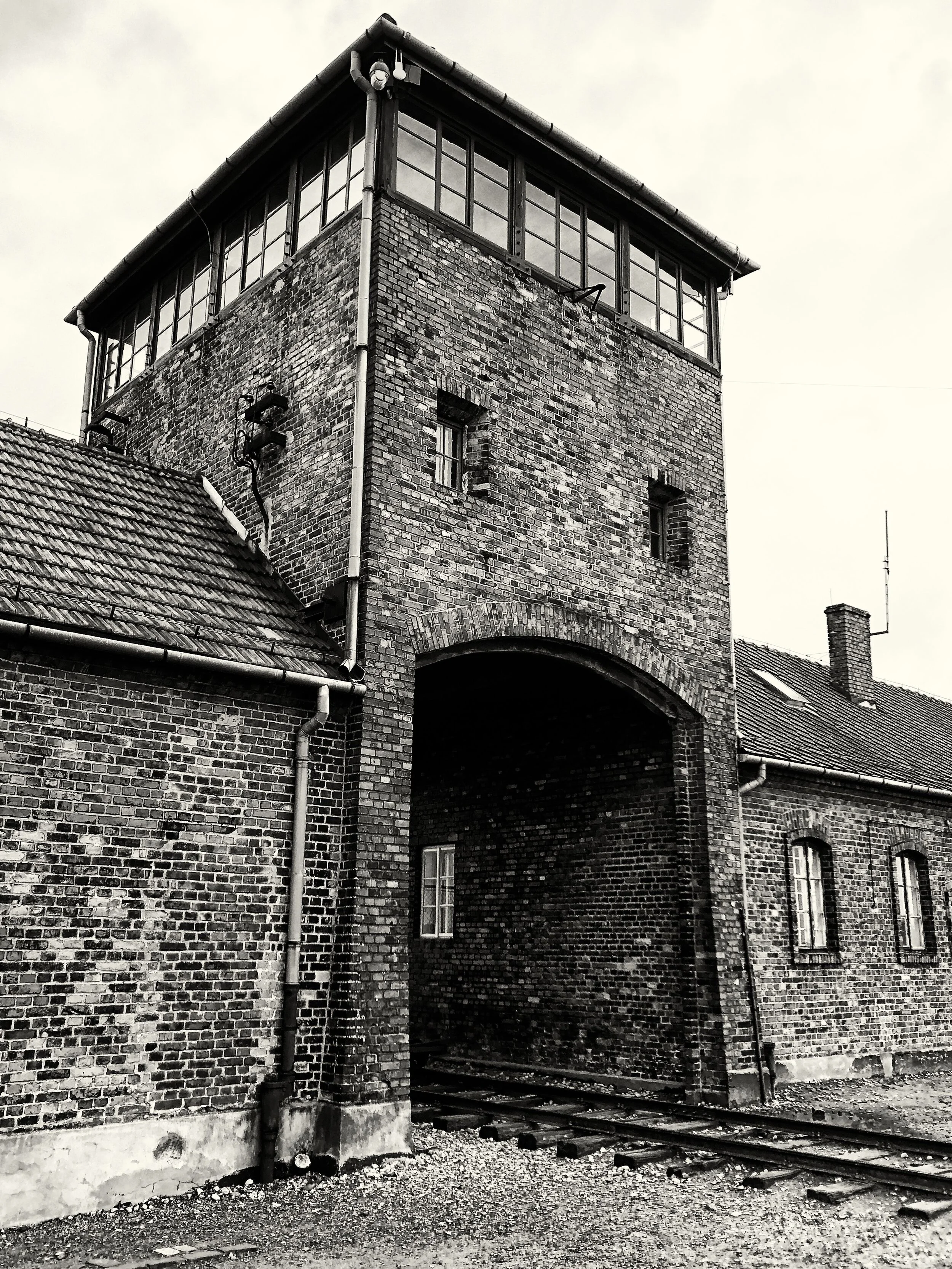

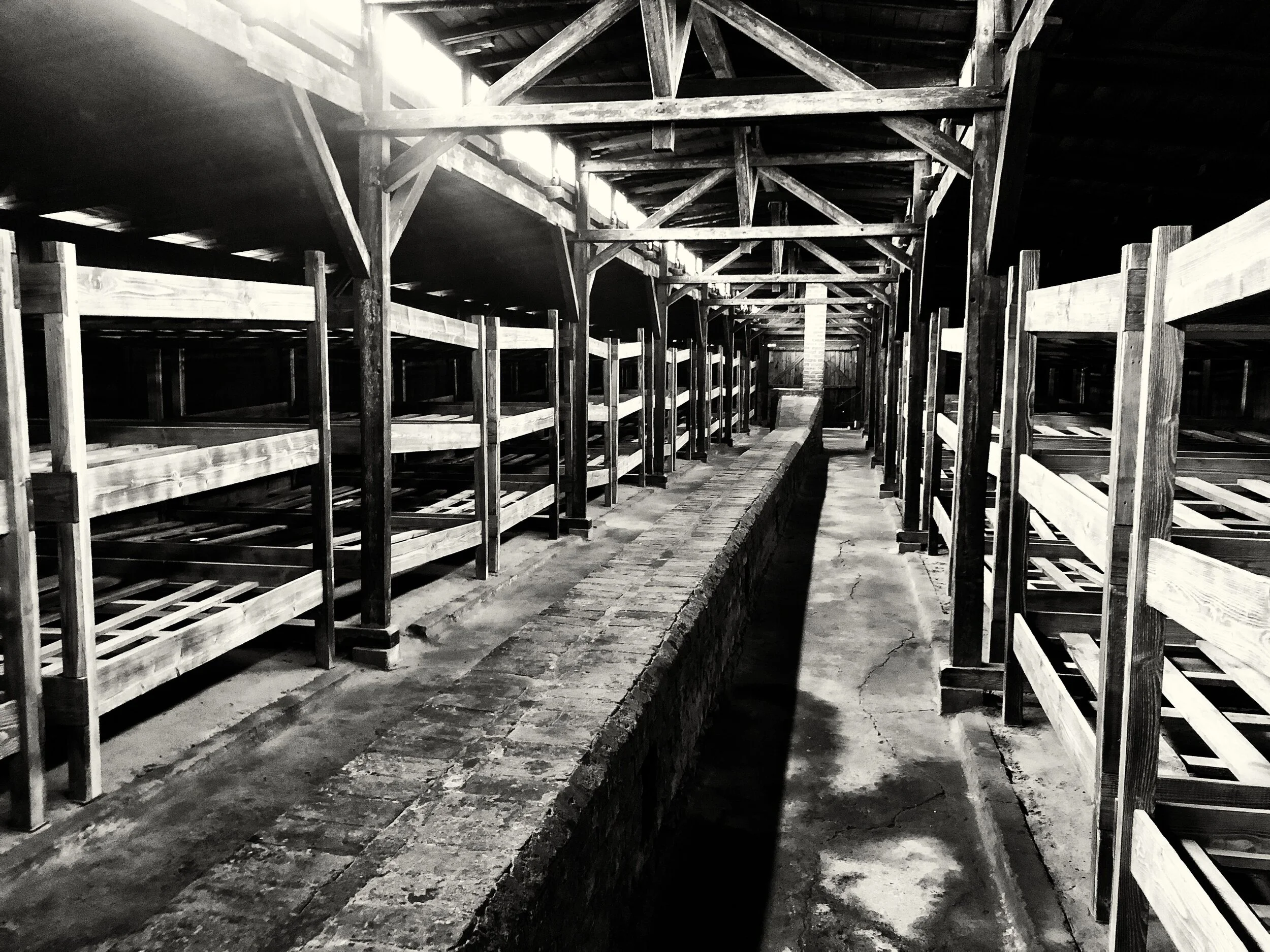
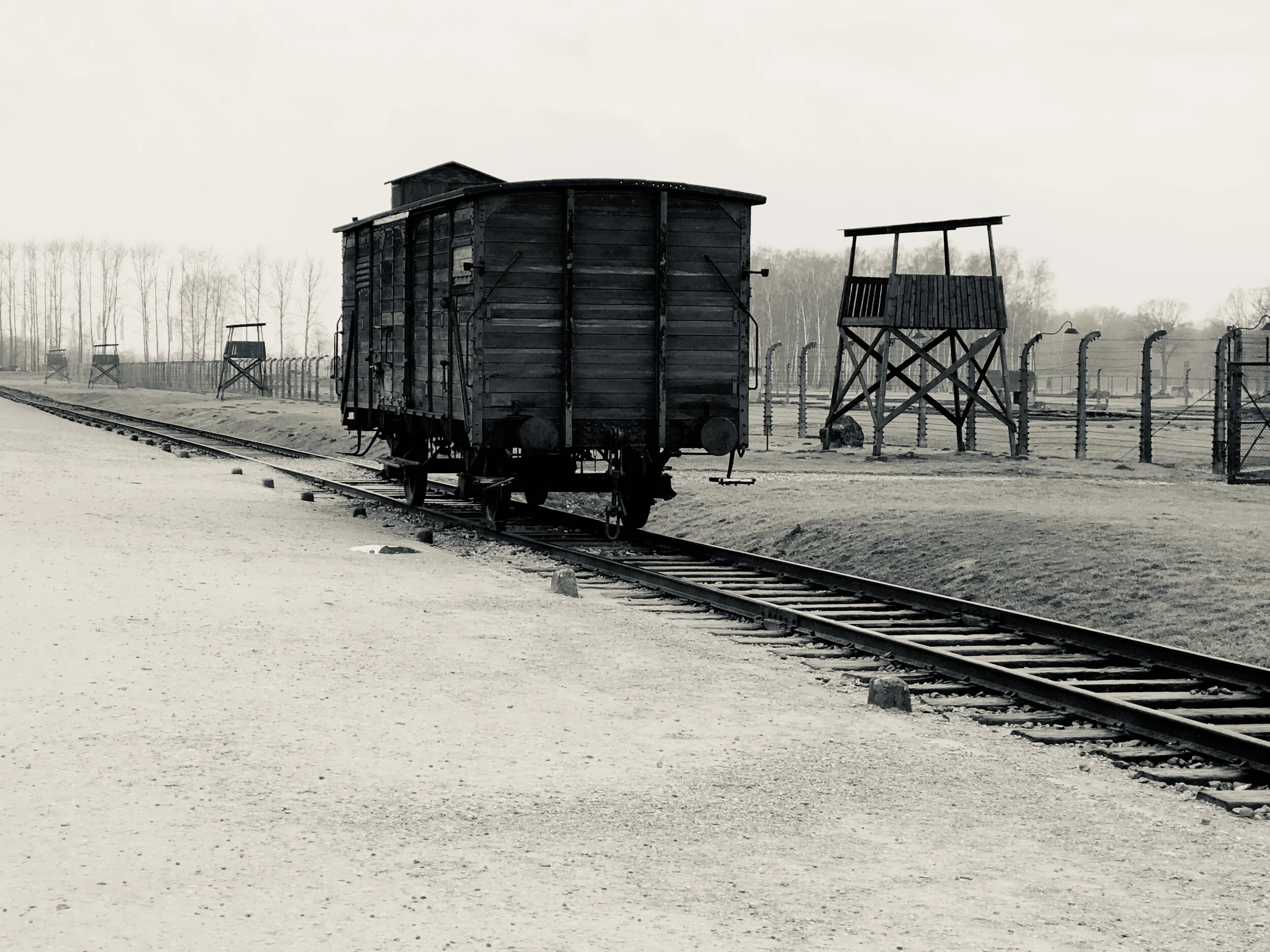
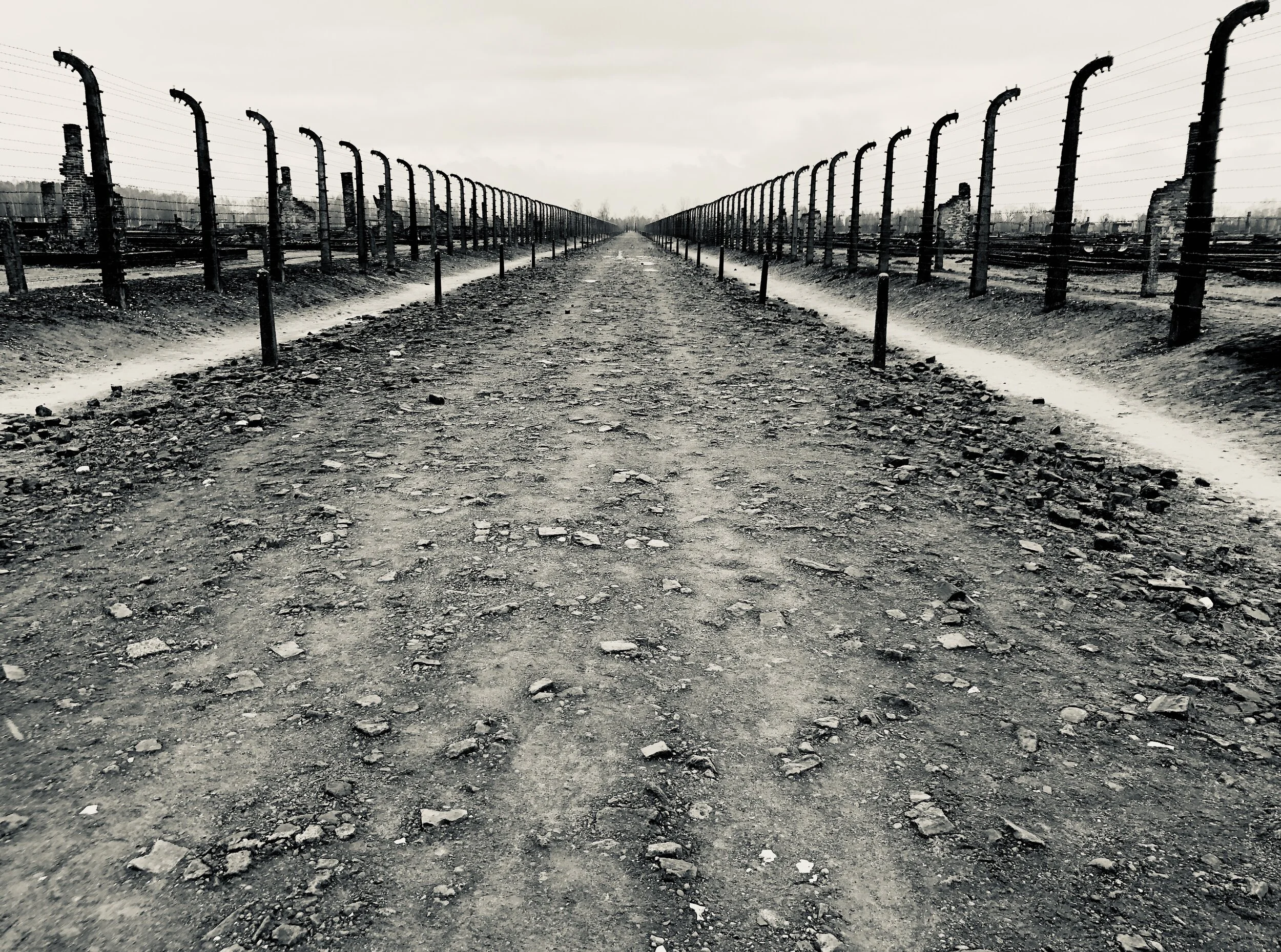
In large part, Auschwitz happened because a tyrannical madman, years after a failed attempted coup of his government, found himself in position to take power again. When there was nothing to stop him, a tragic and deadly line of dominos fell all across the continent. Millions died in concentration camps like Auschwitz. Many millions more were starved, or fell as casualties of war. If one doesn’t think that can happen wherever it is they live, they need only be reminded of once stable Europe.
And they need only be reminded of the scene unfolding a couple weeks ago at the United States Capitol, where now more than ever, we realize how fragile democracy truly is, and that it only lasts as long as we let it.
Included amongst the myriad of horrific images produced by the insurrection, was a man in a “Camp Auschwitz” shirt, a reminder that anti-Semitism is alive and well, amidst a full range of dehumanizing rhetoric and action from large portions of our respective populations. We must never forget the Holocaust, but most importantly, we must do our part to ensure the past does not repeat itself.
These things really do happen. We’ve seen enough beautiful places, with ten times older and more stable histories than our own, be transformed nearly overnight. It’s because of these perspectives that we realize how fortunate we are that we have awaken today in a democracy- there is just simply no guaranteeing that we will wake up the same tomorrow.
After we spent the day in Auschwitz, it was far too difficult to attempt to do anything else. I decompressed by walking through the town of Oświęcim, just blocks away from this epicenter of death, the darkest stain in the world that I’ve ever crossed.
It is striking how close everything is to the camps.
I locked eyes with an old woman, probably in her nineties, and wondered what she had seen in her long life. Perhaps she grew up here, and if so, she has seen a lot. Either way, she lives here now, and as fantastic a town as Oświęcim is, (and it really is, deserving in its own right to visit) its past is inescapable.
Oświęcim is just another reminder that these events aren't ancient history. There are people still alive who liberated these camps. I’ve spoken with them. There are survivors of these camps who are still alive. I’ve spoken to them too. People lived a block away from Auschwitz and walked to the grocery store just as they do to this day.
These dark and monumentally horrific places are oftentimes hiding in plain sight.
Life goes on in colorful Oświęcim, just yards away from one of earth’s greatest epicenters of tragedy
So, what is to make of these particular travels?
If for nothing else, having these reflective experiences are the necessary balance to the more seemingly joyous ones- the resorts and beaches, festive markets, and excursions.
Sandwiched between our visit to Auschwitz, were trips to Amsterdam and Budapest, two of the liveliest, wildest, happiest places in Europe (nevertheless Earth) and the later of which where we ultimately got engaged just a couple of days later. But in recalling the feelings of that week, it would not be complete without Budapest, just as much as it would not be without Auschwitz either. Nearly opposite ends of the spectrum as far as a travel experience, both are highly impactful on the future direction of our lives. In dissecting the emotion of these respective experiences, minutes spent in Auschwitz elicits feelings the depths of which even the joy of an engagement can never know.
As seen prior to exiting Auschwitz- “Those who do not remember the past are condemned to repeat it.”
The easiest way to gain perspective is to dive right in. Learn everything you can, and at the bare minimum, no matter where you are, experience something outside of your comfort zone.
This is why we choose to travel after all, not just for the joys, but for what we can learn along the way. To experience emotion, to be shaped, to be reminded, to fully understand the world around us.
Sometimes this gained understanding can be vital in helping to ensure many of the same tragedies seen across the world do not also happen here at home. At the very least, we confront the darkness face to face, and know that it is real.
I’m not sure where our travels will take us next, but wherever they may be, we will always be sure to fully immerse ourselves in it. Perspective will always be our greatest take away from where we find ourselves.
I will always long for the joy of wanderlust, but I will always need the humility of perspective.







